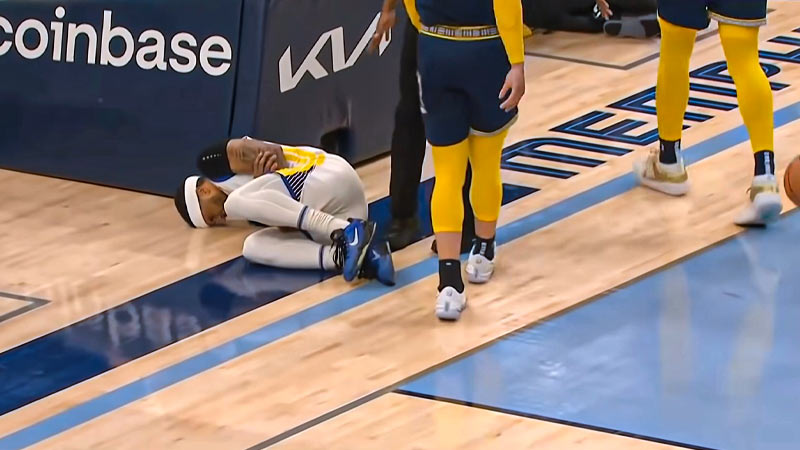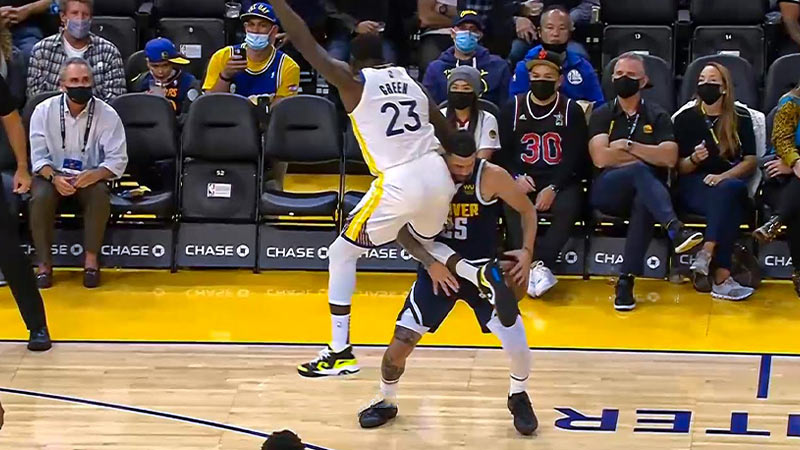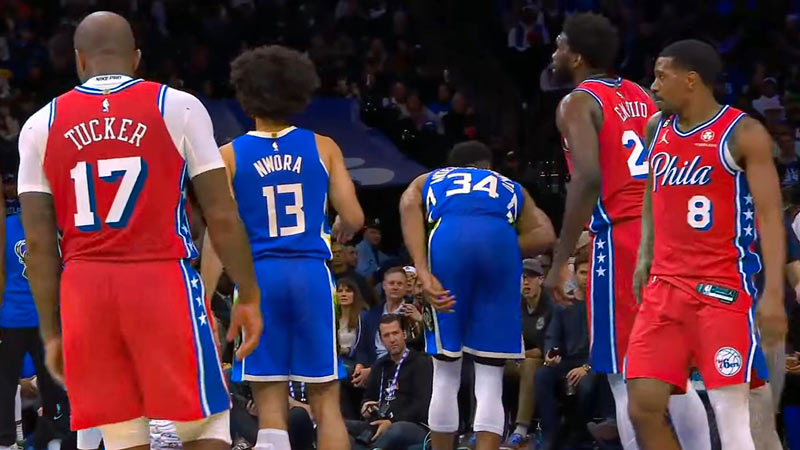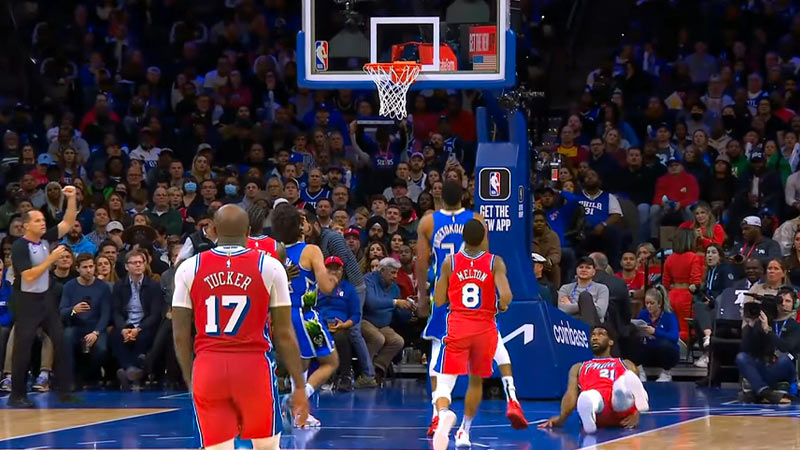In the dynamic world of basketball, fouls are an inevitable part of the game. They occur when players commit actions that violate the rules and regulations set forth by the sport. Fouls can range from minor infractions to more serious offenses that warrant immediate attention.
Among the various types of fouls, one that stands out for its significance is the flagrant foul. A flagrant foul is a term that basketball fans and players encounter frequently. Still, its precise definition and implications may vary. So, what exactly is a flagrant foul in basketball?
This question serves as the focal point of our discussion. In this article, we will explore the concept of flagrant fouls, their criteria, consequences, and their crucial role in ensuring player safety.
By delving into examples, controversies, and the evolution of the rule. We aim to shed light on this critical aspect of the game, highlighting its impact on both the in-game dynamics and the overall integrity of basketball.
What Is A Flagrant Foul In Basketball?
A flagrant foul in basketball refers to a severe infraction that involves excessive and unnecessary contact, often accompanied by unsportsmanlike behavior.
Flagrant fouls are deemed more powerful than regular personal fouls during the ordinary course of play. They can result in severe consequences for the player committing the foul.
Understanding Fouls In Basketball
Fouls in basketball are infractions when a player violates the game’s rules. They are designed to maintain fair play and protect the safety of players. There are various fouls, including personal, technical, and flagrant ones.
Definition Of A Flagrant Foul
A flagrant foul is a category that exceeds the bounds of regular basketball play. It is characterized by excessive force, unnecessary contact, or unsportsmanlike behavior.
The primary purpose of flagrant foul rules is to ensure player safety and discourage dangerous or intentional actions on the court.
Criteria For A Flagrant Foul
Flagrant fouls are assessed based on the severity and intent of the action. Factors considered include the level of contact, the potential for injury, and any unsportsmanlike conduct exhibited by the player. Intent to harm or display malicious behavior can lead to a foul being classified as flagrant.
Examples Of Flagrant Fouls
Flagrant fouls can manifest in various ways on the basketball court. Physical contact exceeding regular play, such as hard fouls, swinging elbows, or dangerous plays near the basket, can be flagrant.
Additionally, unsportsmanlike acts like cheap shots, retaliatory fouls, or intentional trips or hits can also fall under the category of flagrant fouls.
Consequences Of Flagrant Fouls

Flagrant fouls carry significant consequences for the player committing the foul. In-game penalties may include awarding the opposing team penalty free throws and potential ejection from the game.
Off-court effects can involve fines, suspensions, and possible damage to a player’s reputation.
Evolution Of The Flagrant Foul Rule
The flagrant foul rule has evolved to address concerns about player safety and fair play. Historical changes and amendments to the rule have aimed to define and clarify what constitutes a flagrant foul, focusing on protecting players and maintaining the integrity of the game.
Controversies And Debates
Flagrant foul calls can be subjective and sometimes result in debates and controversies. Inconsistencies in enforcement and varying interpretations of the rule can lead to disagreements among players, coaches, and fans. The impact of flagrant fouls on game flow and competitive balance is also discussed in basketball circles.
Player Safety And The Role Of Flagrant Fouls
Flagrant fouls play a crucial role in maintaining player safety. By penalizing dangerous and unsportsmanlike actions, these fouls serve as a deterrent and contribute to a safer playing environment. Officials play a vital role in enforcing flagrant foul rules to uphold fair play and protect players’ well-being.
Criteria For A Flagrant Foul
Flagrant fouls in basketball are serious infractions beyond normal gameplay and can result in severe consequences for the offending player. When assessing whether a foul should be classified as flagrant, two key factors come into play: intent and severity.
Intent Versus Severity
Determining whether a foul was intentionally committed or the result of an accident is crucial when considering a flagrant foul.
Intent is the deliberate act of causing harm or exhibiting unsportsmanlike behavior towards an opponent. On the other hand, severity evaluates the extent of the contact and the potential for injury resulting from the foul.
Factors Considered When Assessing Flagrant Fouls
- Excessive And Unnecessary Contact: Flagrant fouls often involve excessive force or contact beyond a regular part of basketball. Actions such as unnecessarily shoving, hitting, or elbowing an opponent can contribute to the classification of a foul as flagrant.
- Potential For Injury: The risk of injury resulting from a foul is crucial to determining its flagrant nature. Actions that significantly threaten an opponent’s safety, such as dangerous plays near the basket or reckless challenges, are considered.
- Unsportsmanlike Conduct: Flagrant fouls can also stem from unsportsmanlike behavior, including intentional acts that harm or provoke an opponent. This category includes cheap shots, retaliatory fouls, and deliberate trips or hits.
Examples Of Flagrant Fouls

Flagrant fouls in basketball encompass a range of actions that exceed the boundaries of normal gameplay and pose a significant risk to player safety.
These fouls can be categorized into two main types: physical contact exceeding normal basketball play and unsportsmanlike behavior with the intent to injure.
Physical Contact Exceeding Normal Basketball Play
Hard fouls are when a player makes excessive and forceful contact with an opponent during a play, often involving a strong push or shove.
- Swinging Elbows: When a player swings their elbows recklessly, making contact with an opponent’s head or upper body, it can lead to severe injuries and is considered a flagrant foul.
- Dangerous Plays Near The Basket: Actions such as unnecessarily pushing or undercutting an airborne player near the basket can result in severe injuries and are deemed flagrant fouls.
Unsportsmanlike Behavior And Intent To Injure
- Cheap Shots: This refers to deliberate actions by a player to strike or harm an opponent outside the scope of normal gameplay, such as punching, kicking, or elbowing.
- Retaliatory Fouls: When a player seeks revenge or retaliates against an opponent for a previous play by delivering a deliberate and excessive foul, it is considered a flagrant foul.
- Intentional Trips Or Hits: If a player intentionally trips, hits, or obstructs an opponent without any legitimate basketball-related reason, it is classified as a flagrant foul.
Controversies And Debates
Flagrant fouls in basketball have been the subject of much controversy and debate. This section will explore some key points of contention surrounding flagrant fouls, including the subjectivity of calls, inconsistencies in enforcement, and their impact on game flow and competitive balance.
Subjectivity Of Flagrant Foul Calls
One of the primary concerns players, coaches, and fans raised is the subjectivity of flagrant foul calls. The interpretation of a flagrant foul can vary among officials, leading to inconsistent rulings.
The lack of clear-cut guidelines can result in frustration and confusion, as players and teams may perceive certain fouls as flagrant. At the same time, officials may not share the same view.
Inconsistencies In Enforcement
In addition to the subjective nature of flagrant foul calls, inconsistencies in enforcement further contribute to the controversies surrounding these fouls.
Different officials may have varying thresholds for what they consider a flagrant foul, resulting in differing outcomes for similar plays.
The lack of uniformity in enforcement can lead to frustrations among players, coaches, and fans, who seek fairness and consistency in applying the rules.
Impact On Game Flow And Competitive Balance
The introduction of flagrant fouls has undeniably impacted the game flow and competitive balance in basketball. While the intention behind flagrant fouls is to prioritize player safety, some argue that the strict enforcement of these fouls disrupts the flow of the game.
Stoppage of play, lengthy video reviews, and subsequent free throw attempts can slow down the pace and rhythm of the game, altering its natural dynamics.
Evolution Of The Flagrant Foul Rule

The flagrant foul rule has undergone significant changes and amendments to address player safety concerns and align with the league’s policies.
Understanding the historical background and the influence of player safety and league policy helps shed light on the development of this rule.
Historical Background Of The Rule
The concept of flagrant fouls was first introduced in the 1990s as a response to growing concerns over player safety.
Before that, the referees generally determined the severity of fouls on a case-by-case basis without specific guidelines. The introduction of the flagrant foul rule aimed to establish clear criteria for excessively violent or dangerous fouls.
Changes And Amendments Over Time
Since its inception, the flagrant foul rule has undergone several modifications to provide a more comprehensive framework for assessing and penalizing fouls.
The NBA, for example, has implemented different levels of flagrant fouls, ranging from Flagrant Foul 1 to Flagrant Foul 2, to differentiate between different degrees of severity and intent.
This allows officials to make more nuanced decisions when determining the appropriate penalty.
Influence Of Player Safety And League Policy
Player safety has been a primary factor in shaping the evolution of the flagrant foul rule. The league’s commitment to protecting its players and reducing the risk of injuries has led to stricter enforcement and more severe penalties for flagrant fouls.
The increased understanding of the long-term effects of physical contact in basketball has prompted the NBA and other basketball leagues to prioritize the safety of their athletes.
Player Safety And The Role Of Flagrant Fouls
In the fast-paced and physical game of basketball, player safety is of utmost importance. Flagrant fouls play a significant role in ensuring players’ well-being on the court, acting as a deterrent against dangerous and excessive contact.
Additionally, officials have a crucial role in maintaining the integrity of the game by accurately identifying and penalizing flagrant fouls.
Importance Of Protecting Players’ Well-Being
The physical nature of basketball exposes players to potential injuries during gameplay. Flagrant fouls help protect players by discouraging excessive force or intentional harm.
By penalizing such actions, the rules emphasize the importance of fair play and maintaining a safe environment for all participants.
Deterrent Effect Of Flagrant Fouls
The existence of flagrant fouls serves as a deterrent against reckless and dangerous play. Players are encouraged to exercise caution and respect toward their opponents, knowing that severe penalties, such as ejection from the game or potential fines and suspensions, can result from flagrant fouls.
This fosters a safer and more sportsmanlike atmosphere on the court.
Role Of Officials In Maintaining Game Integrity
Officials are crucial in ensuring that flagrant fouls are properly identified and addressed. They must carefully observe and interpret players’ actions to make accurate calls.
The consistency and fairness of officiating are essential in maintaining the integrity of the game and upholding the rules governing flagrant fouls. By enforcing these rules, officials contribute to player safety and the overall spirit of fair competition.
Frequently Asked Questions
Are flagrant fouls subject to video review?
Yes, officials can review flagrant fouls through video replay to ensure accurate and fair assessments, especially in critical situations.
Can flagrant fouls be upgraded or downgraded after review?
Yes, officials have the authority to upgrade or downgrade a called foul after reviewing the video evidence. This allows for corrections in cases where the initial ruling was incorrect or insufficient.
Can a player receive multiple flagrant fouls in a single game?
While rare, a player can accumulate multiple flagrant fouls in a single game. However, once a player commits a Flagrant Foul 2, they are immediately ejected from the game.
Are flagrant fouls subject to further disciplinary action?
Yes, flagrant fouls can result in additional penalties imposed by the league. These may include fines, suspensions, or other disciplinary measures depending on the severity and frequency of the offenses.
Can flagrant fouls be called in non-contact situations?
Yes, flagrant fouls can be called in non-contact situations, such as unsportsmanlike conduct or intentional actions that could harm an opponent.
Conclusion
Flagrant fouls are crucial in maintaining player safety and preserving the spirit of fair competition in basketball. By strictly penalizing excessive and dangerous contact, the rules and interpretation of flagrant fouls ensure that players understand the consequences of their actions.
While the enforcement of flagrant fouls may impact the flow and outcome of a game, their presence is necessary to uphold the integrity and well-being of all participants.
As basketball continues to evolve, properly understanding and applying flagrant fouls remain essential for players, officials, and fans.







